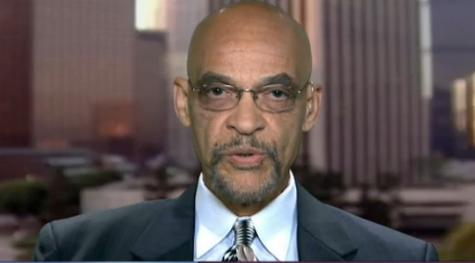Earl Ofari Hutchinson
Saheed Vassell’s parents didn’t have to tell the world that he had serious mental challenges. What else would you call someone who stands on a corner with a metal pipe pointing it a posse of New York police officers. The far too predictable happened, Vassell was shot dead. He’s the rule not the exception when it comes to police handling of the mentally challenged on urban streets. And there are a lot of them that police routinely come in contact with, often violently, according to the Treatment Advocacy Center and the National Sheriff’s Association. Their estimate is that half of those gunned down by police have serious mental health challenges.
A disproportionate number of those, such as Vassell, slain by police are African-Americans simply because in numbers there are disproportionately more of them. The stark figures tell the depressing tale of the magnitude of mental illness among Americans. According to The National Alliance for Mental Health, one in five have mild to severe mental challenges each year; also, one in five teens experience a severe mental disorder.
The tale is grimmer for African-Americans. According to the Health and Human Services Office of Minority Health, African Americans are 20 percent more likely to experience serious mental health problems than the general population. There isn’t much help for them on those streets because of an agonizing checklist of barriers. One, is the gross lack of mental health facilities, thanks to Reagan era policies that slashed and burned mental health funding, facilities and program and dumped tens of thousands of indigent persons with mental challenges out to the streets.
The GOP Congress has continued it tone-deaf response to the mental health crisis with its paltry funding of treatment facilities and programs. The other barriers are law enforcement and courts hands are tied from making a referral and confinement of a mentally challenged person to treatment facilities, and the wall of fear and denial about mental health, and even the stigma shame attached to mental illness.
This invariably dumps the crisis of how to handle mentally challenged individuals with few resources back into the hands of cops. The Obama administration’s Justice Department recognized the mortal danger of so many mentally challenged persons with nowhere to go but the streets and the challenge this posed to police. It developed a set of guidelines for police handling of these individuals. The word to police officers in the guidelines was to “move slowly, being careful not to excite the subject” and to “provide reassurance that the police are there to help.” Some police departments have taken the message that every confrontation with someone who has an obvious mental challenge doesn’t have to end in a hail of bullets. They have a core of specially trained crisis intervention officers and specialist, and even have formed an entire unit to of responders that can rush to a scene to diffuse potentially lethal encounters between police and a mentally challenged person.
This has almost certainly saved a lot of lives. However, it’s only a band aid approach, since the number of individuals with few resources, and family support, will more often than not wind up on the streets. When they do, they are more likely to be repeatedly arrested for minor offenses. The jails are just as woefully underserved ad underprepared as most police departments to provide the kind of specialized care and treatment that mentally ill persons require. They are little more than holding pens and revolving doors shuttling these individuals in a cell and back out to the streets.
There are almost always signs, such as chronic depression, marked personality change, excessive anxieties, prolonged depression, excessive anger, hostility, and the almost standard abuse of alcohol or drugs, that an individual has mental challenges. They cause major stress and frictions in African-American families trying to cope with a family member who has a severe mental disorder. Vassell was no different and his family angrily and publicly made that clear. But what were they do to?
Without the intervention services available to aid the family, and available treatment services, and the funds to pay for them, even if they were available, it didn’t take much to figure that Vassell would be back out on the street and in serious harm’s way. The NYPD says that it has a set of defined protocols and training for dealing with mentally challenged individuals in tense situations on the streets. The protocols specifically involve training in how to handle calls where there is even the possibility that the suspect may have a mental challenge. Whether it applied those protocols to Vassell before gunning him down will be hotly debated. What’s certain though is he is yet another one of the grim number of mentally ill whose final treatment consisted of a hail of police bullets.
Earl Ofari Hutchinson is an author and political analyst. He is the author of the forthcoming The Russia Probe: What Did Trump Know, And When Did He Know It? (Middle Passage Press) He is an associate editor of New America Media. He is a weekly co-host of the Al Sharpton Show on Radio One. He is the host of the weekly Hutchinson Report on KPFK 90.7 FM Los Angeles and the Pacifica Network.

